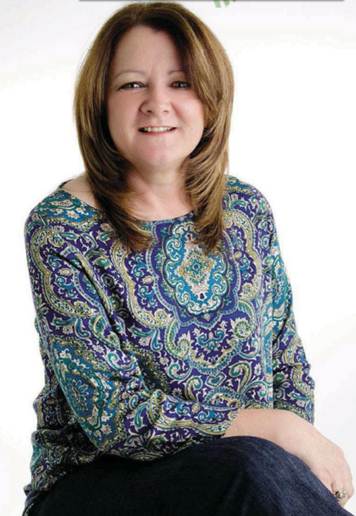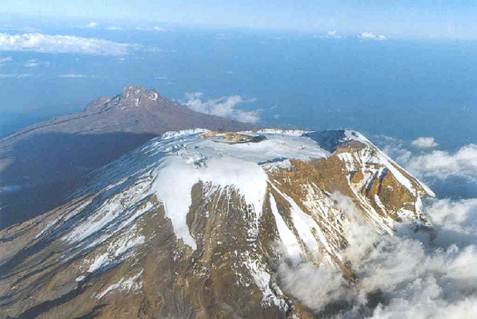Told she may never walk again after a car accident, Susan
Meiring was determined to defy the odds – and she eventually went on to summit
Kilimanjaro.
In 1989, when I was 29, I was involved in car accident. I’d
been to Strand in the Western Cape for the day with friends and was dozing in
the back seat of the car. All I remember is hearing screams and a “thump,
thump” as the car rolled.

Susan Meiring
The next thing I recall was coming to after being knocked
unconscious, aware of numbness from my waist down. I was so scared I didn’t
want the rescue team to touch me. Once I’d been stabilized, I was taken to
hospital for X-rays. I spent five days in ICU on a ventilator – I later found
out that seven of my ribs were broken and they’d penetrated my lungs, so I had
difficulty breathing. But more seriously, it seemed my T4-6 vertebrae were
smashed and I was paralysed from the waist down. I was also diagnosed with
scoliosis (lateral curvature of the spine).
On the fifth day after the accident, I had surgery. My
surgeon said I had a 50/50 chance of being able to walk again as they’d have
turn me, which could snap my spinal cord.
I had a fusion and Harrington rods inserted into my spine to
stabilise it – they were in my back for a year. As I regained feeling, I became
aware that there was a chance I wouldn’t be paralysed after all. This struck me
as an “I told you so” moment, because I hadn’t lost faith that I would walk
again, even though my family had been making contingency plans.
Searching for independence
Post-surgery, I had to lie flat on my back for five weeks,
without even a pillow. I became bored, frustrated and depressed.
But when I received a brace – which kept me upright but
mostly immobile – I had to learn to walk all over again, like a baby.
I don’t know if the doctors were surprised that I could
walk, but the medical students called me “the miracle patient”!
When I finally had my brace cut off, my first questions
were, “Can I drive my own car?” and “Can I work?” I wanted to be independent
again and I moved back to my flat in Bellville, just three blocks away from my
office where I worked as a team leader in the claims department of an insurance
company. I resolved that I’d walk those three blocks to work, however slowly
and painfully. And so began my rehabilitation.
I soon realized that my left leg was weaker than my right,
as I couldn’t lift it. I’d also overheard the surgeon saying I would limp all
my life because I had a damaged nerve in my spine (fibrosis). I came to accept
that I wouldn’t always be able to disguise my limp, though I trained myself to
walk in such a way that it isn’t visible. As I gradually regained my
confidence, I grew to love walking and I became gradually stronger.
Four years ago, after I moved to Pretoria, I took the plunge
and joined a running club. I enjoyed the 10 km run/ walk races on Saturday
mornings. At first, I walked, but when I felt fine o started jogging. I wanted
to keep fit and also found running a great stress reliever.
‘I’ve always been a goal-setter. At each stage of recovery,
I set clear and realistic. Goals that would be internally rewarding’ – Susan
Meiring
Training to overcome
The idea of summiting Kilimanjaro took root when my sister
summited, at age 57. I started to think, “If she can do it, I can do it!” I
have an underactive thyroid, which means I get tired easily, and I’m also
afraid of heights. But none of this deterred me.
I’ve always been a goal-setter and, at each stage of
recovery, I set clear and realistic goals that would also be internally
rewarding. Summiting would be a huge reward, especially at age 51.
I started training three months before I set off for
Kilimanjaro. Just as I was beginning to hike in earnest, I heard my only
brother had died of a heart attack while hiking in the mountains in Cape Town.
He was just 53. I was in shock, but I vowed to honour him with my climb.

the Voortrekker
Monument’s nature reserve
My training schedule was rigorous. On Mondays and
Wednesdays, I would jog for 5km. On Tuesdays and Thursdays, I would hike at the
Voortrekker Monument’s nature reserve, then tackle the huge steps at the
amphitheatre – there are more than 100. On Saturdays, I’d walk or hike in my
neighbourhood. Fridays and Sundays were my rest days. I kept this up for three
months – in the heart of winter – and lost about 10kg! I also became very fit.
The strength to summit
I set off for Tanzania in group of five – I was the only
women in the group. The week before we’d left, I’d become ill. All the vaccines
I had must have destroyed my immunity, because I had flu, sinus problems and no
voice!
We took the scenic Machame Route, which involves seven days
of climbing. You need to climb fairly slowly to acclimatize. The first few days
were hard but enjoyable. The hiking cleared my head and I wasn’t in much pain,
despite my scoliosis and the weight of my backpack.
On day six, we began the ascent to summit from base camp,
Barafu Camp. This is where the climb becomes truly challenging. You trudge
through loose, black lava in the dark and because the air is thin, you find
yourself running out of energy. We’d been warned about altitude sickness.
Although I was nauseous, I wasn’t able to throw up, though I was surrounded by
people who would vomit and either carry on or drop out!
Strangely enough, despite a mild stomach upset and
bloatedness, I wasn’t that ill. I was absolutely driven to summit. Later my
guide – who’d also been my sister’s guide – said, “I knew you would make it.
You’re strong like your sister!”
I was very emotional when I summited. I remember looking
back as the fireball of the sun turned the glaciers gold – it was beautiful.
I was exhausted, could and in pain, but thanks to my guides
– who would often offer me a hand or relieve me of my back-pack – I made it: It
took 14 hours to make the 22km ascent and descent, which tells you how grueling
it is.
It seems incredible to me that the person who summited was
also the person who might not have walked again. But in a sense, I had never visualized
otherwise – I’ve always been stubborn.
When I made the final descent, my sister was there to meet
me. The first thing I said to her was: “Why didn’t you tell me it was so
hard?!”
It was definitely the toughest thing I’ve ever done in my
life. But now I have no excuses – I can never say “I can’t do this.” I can!

At 5,895m/19,340ft
Mt Kilimanjaro is the highest mountain in Tanzania and in all Africa
What I’ve learnt
1. Believe.
Believe. Believe. I never accepted I might be paralysed and not walk again. I
also never thought for a second I wouldn’t summit Kilimanjaro.
2. If you find
long-term goals daunting, set short-term ones that will eventually help you
achieve the long-term ones. And finish what you start!
3. The power of
positive thinking can change and improve your life. Maintaining positive
thinking will bring success and happiness.
4. Always persevere
to overcome. O overcame my fear of heights to climb a mountain.
Nelson Mandela’s Long Walk to Freedom inspired me to never
give up on a better life. It is possible.